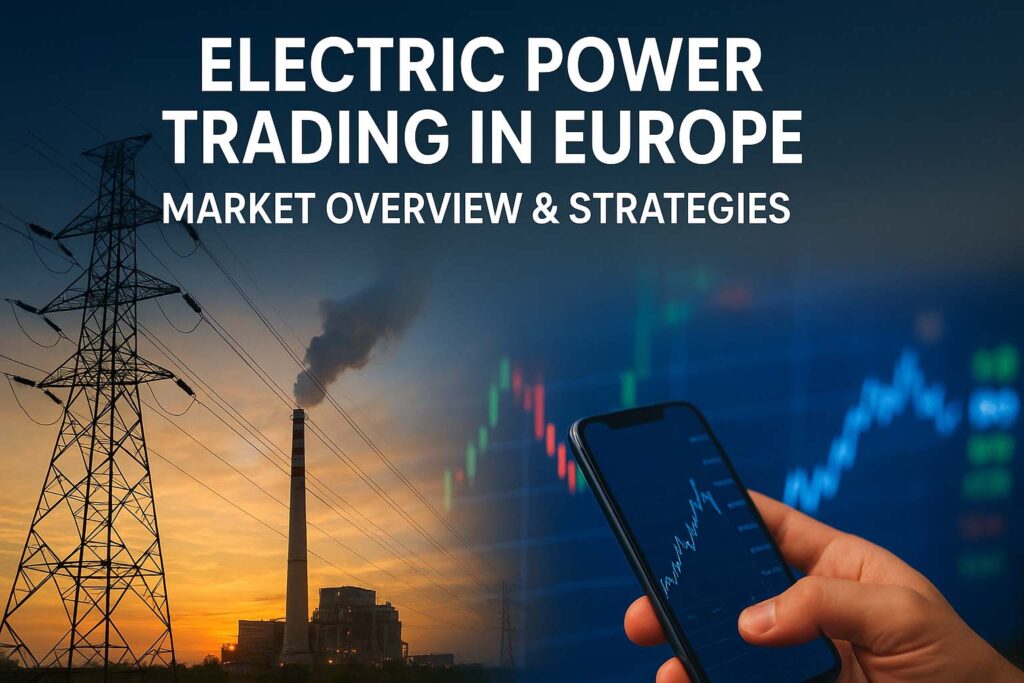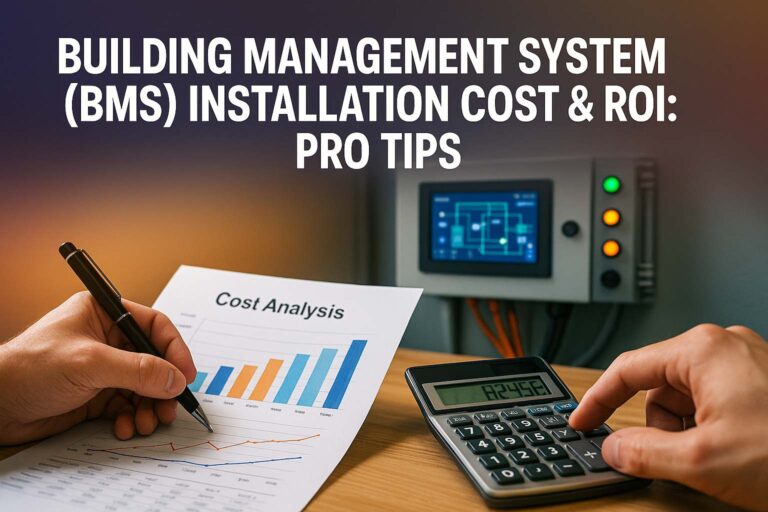Electric Power Trading in Europe: Market Overview & Strategies
Electric power trading in Europe is one of the most dynamic and complex sectors in the global energy market. It connects electricity producers, suppliers, and consumers through sophisticated systems that balance supply and demand in real-time. The European power market has undergone rapid transformation over the last two decades, driven by liberalization policies, renewable energy integration, and cross-border cooperation. Today, power trading is not just about buying and selling electricity; it is also about managing risks, optimizing portfolios, and ensuring stability in an increasingly renewable-driven grid.
Table of Contents
Table of Contents

At its core, electric power trading in Europe enables market participants to purchase or sell electricity for immediate delivery (spot market) or for future delivery (forward and futures markets). This ensures that the lights stay on while maintaining market efficiency and competitive pricing. The European Union’s internal energy market has created a unified framework that allows cross-border energy flows between member states, improving both security of supply and price stability.
The sector is influenced by factors such as renewable generation patterns, fossil fuel prices, carbon pricing, demand fluctuations, and grid infrastructure capabilities. Traders must combine market analysis, weather forecasts, and regulatory updates to make profitable decisions. In this environment, technology such as AI-driven forecasting and blockchain-based settlement systems are becoming increasingly important.
Key Takeaways
- Electric power trading in Europe operates under a unified EU market framework that encourages cross-border trade and competition.
- Renewable integration and market coupling are reshaping how traders manage risk and optimize profits.
- Strategies now rely heavily on technology, data analysis, and regulatory compliance to stay competitive.
Understanding the Structure of Electric Power Trading in Europe
The European power market is organized into several trading segments, each serving a specific role. The most common are:
Day-Ahead Market – Prices are determined for each hour of the following day, based on bids and offers from market participants.
Intraday Market – Traders can adjust positions closer to delivery time to respond to changes in supply and demand.
Balancing Market – Operated by Transmission System Operators (TSOs), this market corrects imbalances in real-time.
Forward and Futures Markets – Long-term contracts that allow hedging against future price volatility.
Know more about Energy Audit for Commercial Buildings: Step-by-Step Guide
A key feature of electric power trading in Europe is market coupling, where prices and flows between countries are coordinated to maximize efficiency. This is supported by the European Network of Transmission System Operators for Electricity (ENTSO-E), which plays a vital role in integration.
Example of Trading Segments and Timeframes
| Market Type | Time Horizon Before Delivery | Purpose |
|---|---|---|
| Day-Ahead | 24 hours | Set hourly prices for next day |
| Intraday | Minutes to hours | Adjust for unexpected changes |
| Balancing | Real-time | Maintain grid stability |
| Forward/Futures | Months to years | Hedge against long-term volatility |
Key Drivers of Electric Power Trading in Europe
Several factors influence trading dynamics across the continent:
Renewable Energy Growth – Wind and solar power create intermittent generation patterns, increasing demand for short-term adjustments.
Carbon Pricing – The EU Emissions Trading System (ETS) affects the cost of fossil fuel generation, impacting electricity prices.
Fuel Prices – Gas, coal, and oil markets directly affect electricity price levels.
Weather and Seasonality – Temperature and precipitation affect demand and hydro generation.
Grid Interconnections – Cross-border transmission capacity determines the ability to balance prices and supply between countries.
Know more about Top Electrical Engineering Software: AutoCAD, ETAP, MATLAB Reviewed
For example, when Germany has excess wind generation, prices can drop significantly, leading to exports to neighboring countries like France or the Netherlands. Conversely, low renewable output can lead to higher imports and price spikes.
Market Players in Electric Power Trading in Europe
The ecosystem includes:
Producers – Utilities and independent power producers that generate electricity.
Suppliers/Traders – Companies that buy and sell electricity to manage portfolios or serve end-users.
TSOs – Manage grid stability and operate balancing markets.
Market Operators – Platforms like Nord Pool and EPEX SPOT facilitate trading.
Financial Institutions – Banks and investment funds participate in futures markets.
Each player has different risk appetites and strategies. For example, renewable energy producers often sell long-term contracts to lock in revenue, while trading firms might exploit short-term price swings.
Regulatory Framework for Electric Power Trading in Europe
Regulation is guided by the EU’s Internal Energy Market rules, with key legislation such as the Third Energy Package and the Clean Energy for All Europeans package. These aim to:
- Increase competition
- Improve security of supply
- Facilitate renewable integration
- Enhance consumer protection
Market participants must comply with REMIT (Regulation on Wholesale Energy Market Integrity and Transparency), which prohibits market manipulation and requires reporting of transactions. This transparency ensures fair competition and protects consumers.
Know more about Top Electrical Equipment Suppliers in UAE and UK
Strategies for Electric Power Trading in Europe
In such a competitive environment, traders use multiple strategies:
Arbitrage Trading – Taking advantage of price differences between markets or products. For example, buying electricity in one country where it’s cheap and selling in another where it’s expensive.
Hedging – Using futures or forwards to lock in prices and protect against adverse movements.
Speculative Trading – Predicting price movements based on market fundamentals and technical analysis.
Renewable Forecast Trading – Adjusting positions based on wind and solar generation forecasts.
Cross-Border Optimization – Exploiting differences in regional demand and supply conditions.
The role of algorithms and AI has grown significantly. Automated trading systems can process vast datasets and execute trades within milliseconds, allowing firms to react faster than manual traders.
Risks and Challenges in Electric Power Trading in Europe
Electricity is unique compared to other commodities because it cannot be stored easily in large volumes without specialized technology like batteries or pumped hydro. This means supply and demand must always be balanced.
Key risks include:
- Price Volatility – Driven by renewable variability and fuel markets.
- Regulatory Changes – Sudden changes in tariffs, subsidies, or grid fees can impact profitability.
- Transmission Constraints – Limited interconnection capacity can cause regional price spikes.
- Weather Uncertainty – Weather forecasts are critical but not perfect.
To manage these risks, traders diversify portfolios, invest in forecasting tools, and maintain close relationships with TSOs and market operators.
Know more about Building Management System (BMS) Installation Cost & ROI: Pro Tips
Technology’s Role in Electric Power Trading in Europe
Advanced analytics, AI, and blockchain are transforming the sector. AI helps improve demand and generation forecasting, while blockchain is being tested for peer-to-peer energy trading and faster settlements.
Smart grid technologies are also important, as they provide real-time data on consumption and generation. This data is invaluable for making informed trading decisions.
Future Trends in Electric Power Trading in Europe
Looking ahead, the sector is likely to see:
- Greater reliance on battery storage to smooth renewable fluctuations.
- Increased electrification of transport and heating, boosting demand.
- Deeper integration of European markets through enhanced interconnectors.
- More decentralized trading through local energy markets.
The ongoing push for carbon neutrality by 2050 will keep reshaping the market, with renewables and flexibility services taking center stage.
Know more about How to Start an Electrical Contracting Business: Best Guide
Conclusion
Electric power trading in Europe is a sophisticated, fast-moving sector that combines economics, engineering, and technology. The market is shaped by renewable growth, interconnected grids, and evolving regulations. Traders who succeed are those who can interpret market signals, manage risks, and adapt strategies to changing conditions. As technology and policy continue to evolve, the future promises more complexity but also more opportunities for innovation and efficiency in Europe’s power markets.
Follow Us on Social:
Subscribe our Newsletter on Electrical Insights for latest updates from Electrical Engineering Hub
#ElectricPowerTrading, #PowerTradingEurope, #EnergyMarkets, #ElectricityTrading, #EuropeanEnergyMarket, #PowerMarketStrategies, #RenewableEnergyTrading, #EnergyTradingInsights, #ElectricityMarketOverview, #CleanEnergyTrading, #PowerTradingStrategies, #EnergyTransitionEurope, #ElectricityMarketTrends, #SustainableEnergyTrading, #WholesaleEnergyMarket






